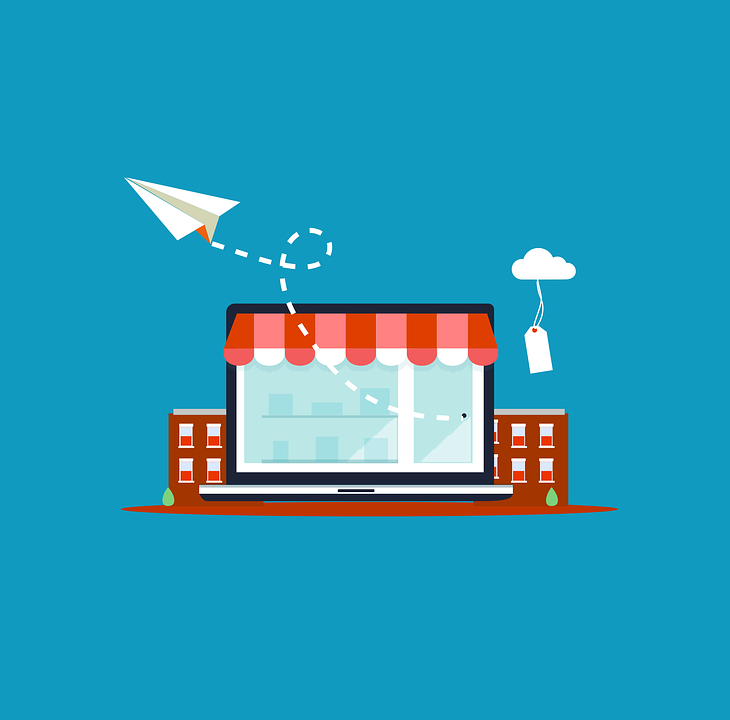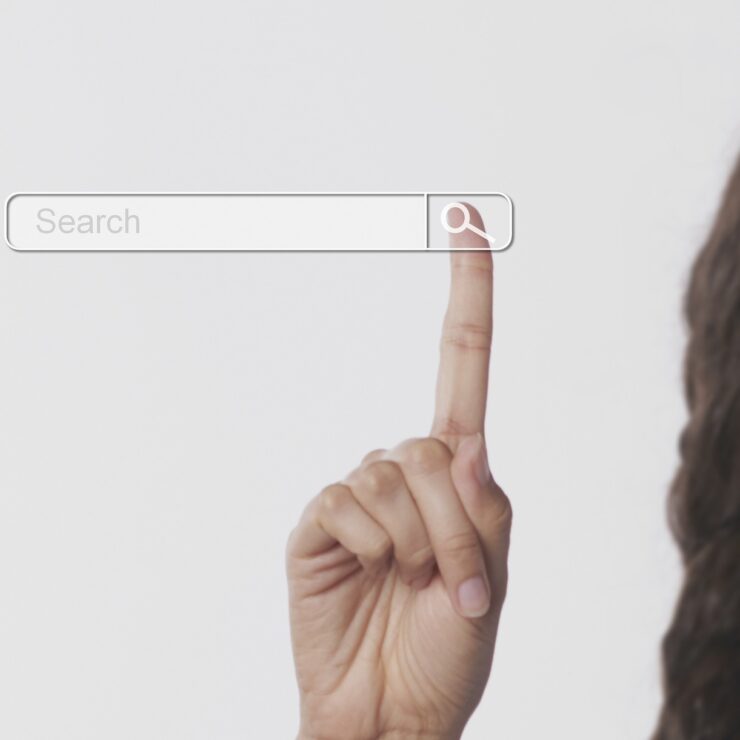Are you looking to create a sales page that converts visitors into customers? Look no further than the best sales page examples for inspiration and guidance. A great sales page combines persuasive copy, stunning visuals, and a clear call-to-action to encourage users to take action. Whether you’re selling a physical product, a service, or a digital course, there are key principles and techniques you can learn from successful sales pages in different industries.
In this guide, we’ll explore the best sales page examples, dissect what makes them effective, and provide you with actionable tips to create your own high-converting sales page.
Let’s get started!
What Is A Sales Page?
A sales page is a specific type of web page that is designed to persuade potential customers to take a specific action, such as making a purchase, signing up for a service, or subscribing to a newsletter. These pages are often used in online marketing and e-commerce, and they are typically optimized to convert visitors into customers.
Sales pages are designed to be highly focused and persuasive, with a clear call-to-action that encourages visitors to take the desired action.
They may include a variety of different elements, such as:
1. Headline: A strong, attention-grabbing headline that highlights the benefits of the product or service being offered.
2. Subheadline: A brief description that elaborates on the headline and provides more detail about the product or service.
3. Product image or video: A high-quality image or video that showcases the product or service and its features.
4. Social proof: Testimonials, reviews, or other social proof that demonstrate the product’s value and reliability.
5. Benefits and features: A clear and concise list of the benefits and features of the product or service, highlighting how it can solve the customer’s problem or meet their needs.
6. Call-to-action: A clear and prominent call-to-action that encourages visitors to take the desired action, such as “Buy now” or “Sign up today”.
7. Guarantee: A money-back guarantee or other assurance that reduces the customer’s risk and increases their confidence in making a purchase.
The goal of a sales page is to provide a compelling and persuasive argument for why the customer should take the desired action, and to remove any barriers or objections that might prevent them from doing so. A well-designed and optimized sales page can be a powerful tool for driving conversions and increasing sales, making it an essential part of any online marketing strategy.
Key Components Of A Sales Page
Here are some key components that are typically found on a sales page:
1. Headline: The headline is the first thing that visitors see on a sales page, and it should be attention-grabbing and succinct. A good headline should communicate the main benefit or value proposition of the product or service being offered.
2. Subheadline: The subheadline is a secondary headline that supports and elaborates on the main headline. It should provide more details about the product or service, and further entice the reader to keep reading.
3. Hero shot: A hero shot is a large, high-quality image or video that showcases the product or service being offered. It should be visually appealing and highlight the key benefits and features of the product.
4. Product description: The product description is a detailed explanation of the product or service being offered. It should highlight the key benefits, features, and specifications of the product, as well as address any potential objections or concerns that the customer may have.
5. Social proof: Social proof is evidence that other people have purchased and benefitted from the product or service. This can take the form of customer testimonials, reviews, ratings, or endorsements from experts or influencers.
6. Call-to-action (CTA): A call-to-action is a clear and compelling statement that encourages the customer to take a specific action, such as making a purchase, signing up for a free trial, or subscribing to a newsletter. The CTA should be prominently displayed and easily accessible on the page.
7. Guarantees and risk-reversal: Guarantees and risk-reversal strategies are designed to reduce the perceived risk of the purchase for the customer. This can take the form of money-back guarantees, free trials, or no-risk offers.
8. Pricing and payment options: The pricing and payment options should be clearly displayed and easy to understand. Any discounts, promotions, or special offers should also be prominently featured.
9. Frequently Asked Questions (FAQs): Frequently Asked Questions provide answers to common questions or concerns that customers may have. They can help address objections and clarify any confusion about the product or service.
10. Closing arguments: The closing arguments are the final statements that reinforce the key benefits and value of the product or service, and encourage the customer to take action. They should be persuasive and memorable, and leave a lasting impression on the customer.
Best Practices For Creating Effective Sales Pages
1. Define Your Target Audience: Before creating a sales page, it’s important to have a clear understanding of your target audience. This includes their needs, preferences, and pain points. By understanding your audience, you can tailor your sales page to their specific needs, making it more effective.
2. Focus on the Benefits: Instead of focusing on the features of your product or service, highlight the benefits that it provides to your customers. Explain how your product or service can help solve their problems or make their lives easier.
3. Use Persuasive Language: Use persuasive language throughout your sales page to encourage visitors to take action. This includes using power words, emotional language, and specific details about your product or service.
4. Keep it Simple: Keep your sales page simple and easy to navigate. Use short paragraphs, bullet points, and images to break up the text and make it more readable.
5. Use Social Proof: Include social proof on your sales page, such as customer reviews, testimonials, and case studies. This can help build trust with your audience and encourage them to take action.
6. Include a Clear Call-to-Action: Your sales page should include a clear and prominent call-to-action (CTA) that tells visitors what action to take next. Make sure your CTA stands out and is easy to find.
7. Optimize for Mobile Devices: Many people browse the internet on their mobile devices, so it’s important to make sure your sales page is optimized for mobile. This includes using a responsive design that adjusts to different screen sizes, and making sure your page loads quickly.
8. Test and Optimize: Finally, it’s important to test and optimize your sales page to see what works best. This includes A/B testing different versions of your page to see which one performs better, and using analytics tools to track your page’s performance over time.
By following these best practices, you can create an effective sales page that resonates with your target audience and helps drive conversions.
Examples of Successful Sales Pages in Different Industries
Here are some examples of successful sales pages in different industries, along with explanations of what makes them effective:
E-commerce: Amazon.com
Amazon is one of the most successful e-commerce sites in the world, and their sales page is a big part of that success. Here are a few key features that make their sales page effective:
- Clear and concise product descriptions: Amazon’s product pages provide detailed information about each item, including features, dimensions, and customer reviews.
- User-friendly design: The page layout is clean and easy to navigate, with clear calls to action (CTAs) like “Add to Cart” and “Buy Now.”
- Cross-selling and upselling: Amazon’s algorithm suggests related items that customers might also be interested in, and offers discounts for bundling products together.
- Reviews and ratings: Customer reviews and ratings are prominently displayed on the page, providing social proof that can help persuade potential buyers.
Software: Slack.com
Slack is a popular team messaging app that has revolutionized the way many companies communicate. Here’s what makes their sales page effective:
- Clear value proposition: Slack’s homepage makes it clear what their product does and why it’s valuable, with headlines like “Where work happens” and “A better way to communicate.”
- Engaging visuals: The page uses high-quality graphics and animations to showcase the app’s features and benefits.
- Social proof: Slack prominently displays logos of some of their high-profile customers, like Airbnb and Shopify, which can help build trust with potential buyers.
- Free trial offer: Slack offers a free trial so that potential customers can try out the app before committing to a purchase.
Education: Coursera.org
- Coursera is an online learning platform that offers courses from top universities and companies. Here’s what makes their sales page effective:
- Compelling headlines: The page features headlines that highlight the benefits of taking courses on Coursera, such as “Advance your career” and “Learn from the world’s best universities.”
- Clear course information: Coursera’s course pages provide detailed information about each course, including the syllabus, instructor bio, and student reviews.
- Social proof: Coursera prominently displays the logos of their university partners, which can help build credibility with potential students.
- Personalized recommendations: Coursera uses an algorithm to recommend courses based on a user’s interests and past behavior on the site.
Consulting: McKinsey.com
McKinsey & Company is a global management consulting firm that helps companies solve complex business problems. Here’s what makes their sales page effective:
- Clear messaging: McKinsey’s homepage features a concise and compelling value proposition, with headlines like “We help organizations across the private, public, and social sectors create the change that matters.”
- Case studies: The page showcases several case studies that highlight the firm’s success in solving real-world business challenges for clients.
- Expertise and thought leadership: McKinsey offers a range of resources on their site, including articles, reports, and podcasts, which demonstrate their expertise in the consulting industry.
- Contact form: The page includes a form that allows potential clients to request more information or schedule a consultation with a McKinsey representative.
These are just a few examples of successful sales pages in different industries. By incorporating some of these key elements into your own sales pages, you can improve your chances of converting potential customers into buyers.
Case Studies of Companies with Effective Sales Pages
Here are some examples of companies that have improved their sales with effective sales pages:
Dropbox

Dropbox is a file hosting service that allows users to store and share files online. They improved their sales by creating a sales page that emphasized the benefits of their product and showed potential customers how it could make their lives easier. The page used clear, concise language and featured a simple, user-friendly design that made it easy for visitors to understand what Dropbox was and how it worked. As a result, Dropbox was able to increase its signups by 60%.
Basecamp

Basecamp is a project management tool that helps teams collaborate and stay organized. They improved their sales by creating a sales page that focused on the pain points of their target audience, such as the difficulties of managing projects across multiple teams and platforms. The page highlighted the unique features of Basecamp that addressed these pain points and used customer testimonials to demonstrate the effectiveness of the product. Basecamp’s sales page resulted in a 30% increase in conversions.
Crazy Egg

Crazy Egg is a website optimization tool that helps businesses improve their website’s user experience and conversion rates. They improved their sales by creating a sales page that showcased the benefits of their product, including detailed analytics and insights into user behavior. The page used visual elements, such as screenshots and graphics, to demonstrate how the product worked and provided social proof in the form of customer testimonials and case studies. Crazy Egg’s sales page resulted in a 21.9% increase in conversions.
Shopify

Shopify is an e-commerce platform that helps businesses sell products online. They improved their sales by creating a sales page that focused on the benefits of their platform, such as ease of use, customization options, and support for multiple sales channels. The page used clear, concise language and provided examples of successful businesses that had used Shopify to grow their sales. Shopify’s sales page resulted in a 10% increase in signups.
In each of these case studies, the companies were able to improve their sales by creating sales pages that effectively communicated the benefits of their products to potential customers. By focusing on their target audience’s pain points and showcasing the unique features of their products, these companies were able to increase their conversions and grow their businesses.
Tips For Optimizing And Testing our Sales Pages
Optimizing and testing your sales pages is a critical part of the process of creating an effective sales page. Here are some tips for optimizing and testing your sales pages:
1. Set clear goals: Before you start testing and optimizing your sales page, you need to define your goals. What do you want to achieve with your sales page? Do you want to increase conversions, reduce bounce rates, or improve engagement? Setting clear goals will help you focus your testing efforts and measure the success of your sales page.
2. Use A/B testing: A/B testing is a common technique used to optimize sales pages. A/B testing involves creating two versions of your sales page, and then testing them against each other to see which one performs better. You can test different elements of your sales page, such as the headline, the call-to-action, the layout, or the images.
3. Test one element at a time: When you’re conducting A/B testing, it’s important to test one element at a time. This will help you isolate the impact of each element on your sales page’s performance. For example, if you’re testing the headline, keep all other elements of the page the same.
4. Use analytics: Analytics tools can provide valuable insights into how your sales page is performing. You can use tools like Google Analytics to track key metrics such as bounce rates, time on page, and conversion rates. This data can help you identify areas of your sales page that need improvement.
5. Focus on your target audience: Your sales page should be designed to appeal to your target audience. Make sure you understand your audience’s needs, preferences, and pain points, and use this information to create a sales page that speaks directly to them.
6. Keep it simple: Your sales page should be simple and easy to understand. Avoid clutter and distractions that can take away from your message. Keep your copy concise and to the point, and use images and graphics to enhance your message.
7. Test regularly: A/B testing should be an ongoing process. Test different elements of your sales page regularly to ensure that you’re always improving its performance.
By following these tips, you can optimize and test your sales pages to improve their effectiveness and drive more conversions. Remember to set clear goals, use A/B testing, focus on your target audience, and use analytics to measure your performance. With time and effort, you can create a sales page that converts visitors into customers.
Conclusion
A well-crafted sales page can make a significant difference in driving conversions and increasing revenue for your business. By including key components such as a compelling headline, clear value proposition, social proof, and a strong call-to-action, you can create a sales page that effectively communicates the benefits of your product or service to potential customers.
To create the best sales page possible, it’s important to study and learn from successful examples in your industry and beyond. By understanding what works and what doesn’t, you can optimize your own sales page for maximum impact. Additionally, regularly testing and experimenting with different elements of your sales page can help you continuously improve and refine your messaging.
Overall, by investing time and resources into creating an effective sales page, you can build a powerful tool for driving growth and success for your business.





 Get Sala Now
Get Sala Now